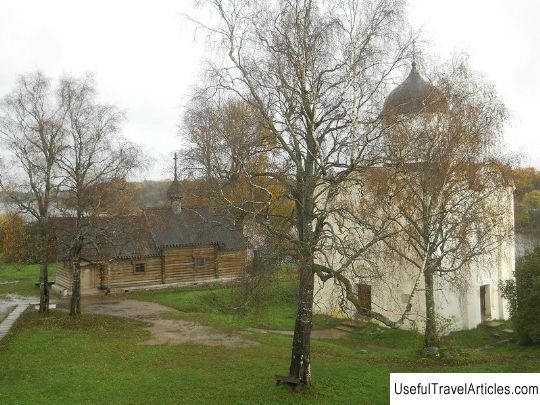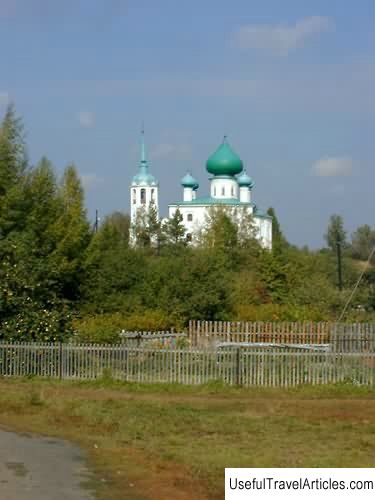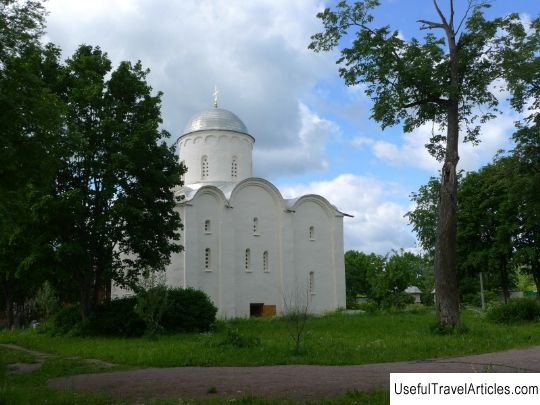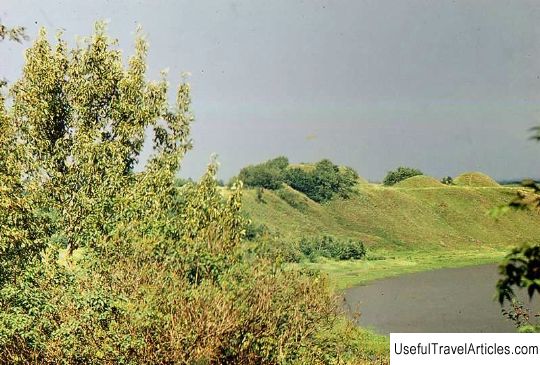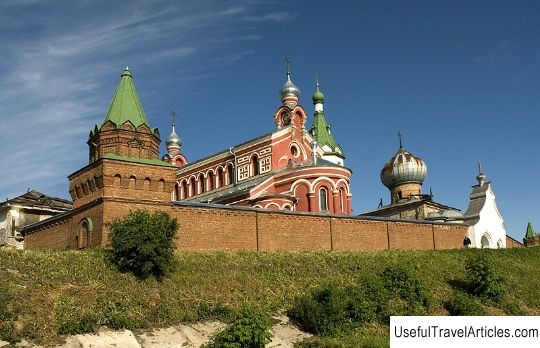St. George Cathedral description and photos - Russia - Leningrad region: Staraya Ladoga
Rating: 7,9/10 (4905 votes) 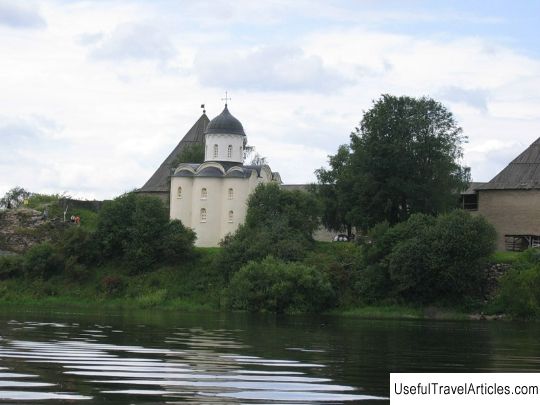
St. George's Cathedral description and photos - Russia - Leningrad region: Staraya Ladoga. Detailed information about the attraction. Description, photos and a map showing the nearest significant objects. Photo and descriptionThe Cathedral of St. George the Victorious is located in the village of Staraya Ladoga, Volkhov district. It was built during the reign of Mstislav the Great in Novgorod. Then it was decorated with frescoes that have survived to this day (with the help of the skill of restorers). The southern nave of the temple is decorated with images of warriors-martyrs: Saint Ephstathius Placidus, Sava Stratilates and an unknown saint, whose name is indicated on the fresco (presumably Dmitry Thessaloniki). St. George's Church, according to legend, was built in honor of the unknown victory of the Russian troops over the enemy. It is not in vain that the tract, not far from which the temple was erected, is still called the `` Victory ''. That is why military exploits are glorified on the murals of the temple. Most researchers believe that the Cathedral of St. George the Victorious was built in 1165-1166. It is considered the most ancient of the existing churches of Staraya Ladoga. Often, temples were erected in memory of military victories in ancient Russia. In this regard, it is quite possible that this temple in the Ladoga fortress was built in memory of the victory over the Swedes. Military exploits are captured on the fresco `` The Miracle of George about the Serpent ''. Its plot has come down to us almost in full. The fresco is an ancient depiction of victory in Russian monumental painting. The hero is depicted on a white horse with a tied red tail and red mane, in military armor, with a shield and a spear in his hands. On the right side there is a tower of the palace, from which the royal couple and their entourage look out. From under the hoof of the solemnly protruding horse George a reptile creeps, like a dragon with a burning eye, horn and open mouth. The author of the plot, according to art critics, is an excellent master of composition. He skillfully combined the most powerful dynamics of action and monumental statics hidden in the details into a single whole. All these nuances of states are clearly visible in the majestic figure of George the Victorious and the subtle, light movement of the princess; through the dying dying waves of the tail of a serpent and the stately tread of a horse - to a sharp wave of a star cloak, which echoes the rhythmic steepness of the hills of Cappadocia - the place where the event took place, at first glance perceived as a monochrome coloring of the plot, in fact, reflects the entire palette of skill of the author of the painting. In addition, the domed painting is still preserved in the St. George Church, which depicts the scene of the Ascension of the Lord with the Mother of God, apostles and angels. The drum also contains images of the prophets. On the western wall, according to tradition, the painting of the Last Judgment accompanies the leaving the temple. From the northern wall, their heavenly patron, Nicholas the Wonderworker, looks at the inhabitants of the seafaring and fishing region. The abundance of ornaments is typical for the decoration of a Russian church. It was extremely to the taste of the Russian people and even in today's appearance, which has passed through the centuries, amazes with the irrepressible imagination of the master of painting. The frescoes were restored only at the beginning of the 20th century. During major repairs and the creation of a multi-tiered iconostasis in the 16th century. the frescoes were barbarously plastered. Only in 1780 during the next renovation were fragments of ancient paintings found. By order of the Metropolitan of St. Petersburg and Ladoga Gabriel, the entire plaster layer was broken off. But the ancient frescoes could not be restored at that time. It was only in 1927 that the surviving frescoes could be restored to their original appearance. The wall paintings of the St. George Church were considered by art critics to be Korsun and Byzantine. But at the moment it has been precisely proven that the manner of writing, the nature of the ornaments and inscriptions belongs to the masters of Novgorod. Most likely, these are the artists of the same school who worked in the famous Church of the Savior on Nereditsa in Novgorod. According to legend, it was in St. George's Church in Staraya Ladoga that Grand Duke Alexander Nevsky consecrated his sword and prayed before go to battle with the Swedes.       We also recommend reading Old Believers Church of the Intercession of the Blessed Virgin Mary of the Zamoskvoretskaya community description and photos - Russia - Moscow: Moscow Topic: St. George Cathedral description and photos - Russia - Leningrad region: Staraya Ladoga. |
